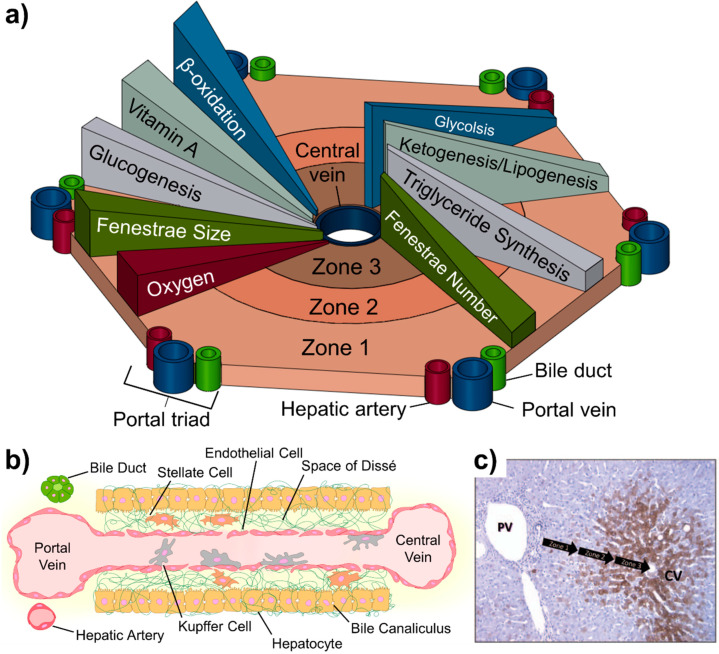Figure 1.
The liver lobule and the associated anatomy. (a) Biochemical pathways, gradients and endothelial properties alternation across the zones of liver lobule. Zone 1 is defined as the region closest to the “portal triad,” consisting of the portal vein, the hepatic artery, and the bile duct. The innermost zone is located near the central vein and is referred to as the pericentral region. Different anabolic and catabolic pathways are differentially active in different zones. A key “zonation modulator,” the Wnt/β-catenin and triglycerides (TG) pathways are active in the pericentral region near the central vein. The glucagon pathway, in contrast, displays its highest activity near the periportal region. (b) Composition of the liver sinusoid. (c) Variation of CYP3A4 expression across the lobule. Metabolic activity (brown) increases from the portal vein to the central vein. Reproduced from [35] with permission from Taylor & Francis Group.

